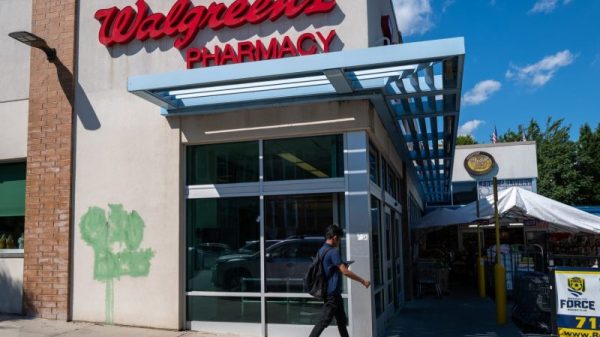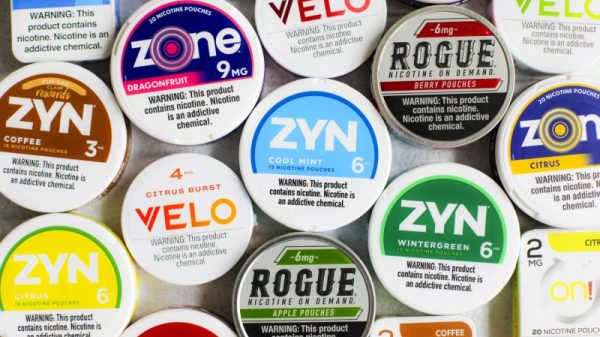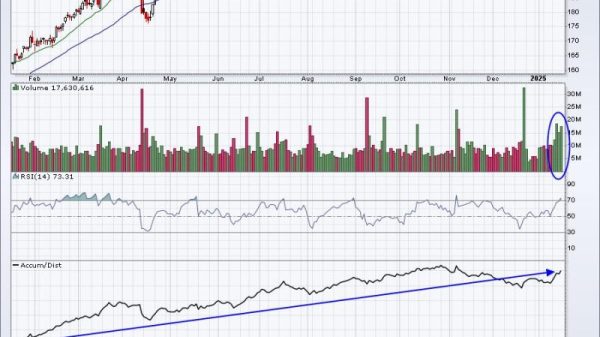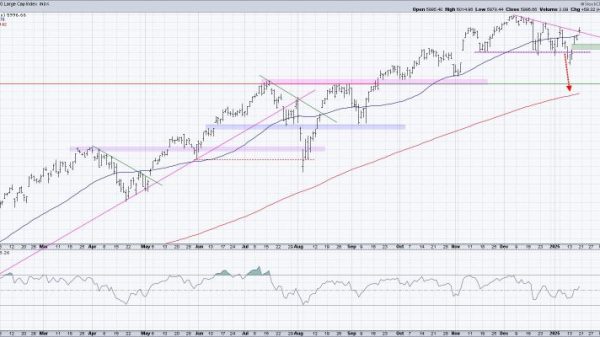Vice President Kamala Harris and former president Donald Trump are locked in a statistical tie in Pennsylvania, according to a Washington Post poll of a state that many analysts see as the battleground most likely to determine the outcome of the presidential election.
One week after a debate that Pennsylvania voters widely say Harris won, she is favored by 48 percent of both likely voters and registered voters, while Trump is supported by 47 percent of voters in both categories. Third-party candidates are not a major factor in the race, The Post’s poll finds: After excluding minor candidates, Harris and Trump are both at 48 percent among likely voters, with Harris at 48 percent and Trump at 47 percent among registered voters.
More than 8 in 10 registered voters in Pennsylvania reported watching at least some of last week’s presidential debate, including similar majorities of Democrats, Republicans and independents. Twice as many debate-watchers said Harris won the debate than said Trump, 54 percent to 27 percent, with another 17 percent saying neither won.
Pennsylvania has been narrowly divided every time Trump has been on the ballot. In 2016, he won the state by less than a percentage point. Four years later, President Joe Biden carried it by one percentage point on his way to capturing the White House.
The state’s closely watched Senate race also appears to be tight. Democratic Sen. Bob Casey has the support of 47 percent of likely voters, while Republican challenger Dave McCormick is backed by 46 percent. Excluding third-party candidates, the two are tied at 48 percent each. Democrats cannot afford to lose Casey’s seat if they hope to keep their narrow majority in the chamber.
The presidential results are similar to the Post average of recent polls, which shows Harris with a three-point edge in Pennsylvania. Since last week’s debate, Harris led Trump by six points in a Quinnipiac University poll and held a three-point edge in a USA Today/Suffolk poll, while a Marist College poll showed the race tied. Most polls have found Casey with a clearer advantage in the Senate race than the Post poll did, although a CNN poll conducted before the most recent debate also found an even contest.
The Post poll finds that voter enthusiasm in Pennsylvania is extraordinarily high, with 93 percent of registered voters saying they are certain to vote. Similarly, 78 percent of Pennsylvania voters say they are “extremely motivated” to cast ballots this year. Among the most motivated voters, 50 percent support Trump while 49 percent support Harris.
Voter turnout surged between 2016 and 2020 in Pennsylvania, and the composition of the electorate will be crucial again this year. Among likely voters who voted in 2020, according to state voting records, Harris is at 49 percent and Trump at 47 percent. Among those for whom there is no record of voting in 2020, Trump has a slight advantage, 48 percent to 43 percent.
Protecting American democracy is the most important issue to Pennsylvania voters, with about 7 in 10 saying it is “extremely important.” About 8 in 10 Democrats say this issue is extremely important, compared with nearly 7 in 10 Republicans and almost 6 in 10 independents.
But Pennsylvania voters disagree about which candidate is best equipped to protect democracy, with 48 percent saying Harris and 45 percent choosing Trump.
Trump has continued to say falsely that the 2020 election was stolen. Overall, 55 percent of voters in Pennsylvania say Biden won the election “fair and square,” including 93 percent of Democrats and 56 percent of independents. But 69 percent of Republicans say Biden won “due to voter fraud.”
More than half of voters also say the economy and crime and safety are extremely important issues. Immigration, health care and abortion rank lower, although more than 4 in 10 voters say each issue is extremely important in their choice.
Trump is seen as better able to handle the economy (51 percent to 42 percent), immigration (52 percent to 39 percent) and crime and safety (50 percent to 43 percent). On which candidate would be better at helping middle-class workers, the split is Harris at 48 percent and Trump at 46 percent.
Harris holds a big advantage on abortion (52 percent to 34 percent) and a smaller edge on health care (48 percent to 40 percent). Among Pennsylvania registered voters, 64 percent say abortion should be legal in all or most cases, while 26 percent say it should be illegal in all or most cases.
Among likely voters who cite the economy as extremely important, Trump has the support of 65 percent, and among those who say immigration is extremely important, he has the support of 80 percent. Harris is favored by 70 percent of those who say abortion is extremely important and 56 percent who say the same about health care.
Overall, Pennsylvania voters have a dour view of the national economy, with 66 percent saying it is either “not so good” or “poor,” while 33 percent say it is either “excellent” or “good.” They have a more optimistic view of their own financial situations, with 60 percent positive and 37 percent negative. Among voters who say the economy is bad but their pocketbooks are okay, Trump leads by 34 percentage points.
On other issues of importance to the Pennsylvania economy, a big majority (68 percent) of voters favor hydraulic fracturing — often called “fracking” — for oil and gas production. As a presidential candidate in the 2020 campaign, Harris said she opposed fracking but has since said she has changed her view and would not ban it as president.
Trump has called for a mass deportation of undocumented immigrants living in the United States, but a majority of Pennsylvania voters oppose that proposal. Given three options, 41 percent of Pennsylvania voters say they favor deporting most undocumented immigrants, while 48 percent say that undocumented immigrants instead should be offered a chance to apply for legal status.
Another 7 percent say these migrants, many of whom have been living in the United States for years, should be “left alone by authorities unless they are convicted of a violent crime.”
About 3 in 4 Trump supporters (76 percent) say most undocumented immigrants should be deported to the countries they came from, while more than 3 in 4 Harris supporters (79 percent) say they should be offered a chance to apply for legal status.
Both candidates have tried to position themselves as agents of change. Voters’ perceptions of what kind of change each might bring reflect the overall divisions in the state and the partisan divide in the country.
Looking at Trump, 45 percent of voters say he would bring change for the better, 46 percent say he would bring change for the worse and 6 percent say his election would not change the country.
With Harris, 11 percent say her election would not change the country, while 43 percent say she would bring change for the better and an identical percentage say she would bring change for the worse.
Harris is viewed favorably by 47 percent of Pennsylvania voters, while 44 percent have an unfavorable view of her. Perceptions of Trump are net negative, with 49 percent unfavorable and 43 percent favorable.
The two Senate candidates are both roughly split between favorable and unfavorable: Casey at 41 percent favorable to 40 percent unfavorable and McCormick at 37 percent favorable to 35 percent unfavorable. Both have high shares of voters saying they have no opinion about them, 26 percent for McCormick and 18 percent for Casey.
The politician in the poll seen most positively by Pennsylvania voters is Gov. Josh Shapiro (D), who was under consideration to be Harris’s running mate until she selected Minnesota Gov. Tim Walz. Shapiro has a favorable rating that is about 2-to-1 positive (51 percent favorable to 26 percent unfavorable).
Though Biden won the state in 2020 and lived in Scranton as a child, he remains unpopular with Pennsylvania voters, with 41 percent saying they approve of the job he is doing as president and 57 percent disapproving, including 49 percent who strongly disapprove.
In the choice between Harris and Trump, the Pennsylvania electorate splits along predictable lines. Among likely voters, men support Trump by nine percentage points (52-43 percent) while women favor Harris by 10 points (53-43 percent).
Partisans are firmly behind their nominees, with 9 in 10 Republicans backing Trump and about 9 in 10 Democrats favoring Harris. Among independents, it’s Harris at 46 percent, Trump at 45 percent.
Trump has a 10 percentage-point lead among White Pennsylvania voters, narrower than his 15-point margin in 2020 exit polling. Trump leads by 26 percentage points among White voters without four-year college degrees (smaller than his 32-point advantage in 2020 exit polls), while Harris leads by 11 points among White college graduates (similar to Biden’s nine-point margin in 2020).
White women split evenly between the two candidates, while White men favor Trump by 21 points. Voters of color back Harris by 72 percent to 20 percent.
Among likely Black voters, Harris is at 78 percent to Trump’s 17 percent. While the margin is hefty, she is doing worse than Biden did in 2020. In the election four years ago, Biden won 92 percent of the Black vote in Pennsylvania compared with 7 percent for Trump, according to network exit polls.
Suburban likely voters split 50 percent for Harris and 46 percent for Trump; suburban women favor Harris by 15 points while suburban men lean toward Trump by seven points. Harris leads among urban voters by 24 points, while Trump leads by 30 points among voters in small towns and rural areas.
Harris leads Trump by 12 percentage points among voters in union households and by a similar 11-point margin among union members themselves. In 2020, network exit polls found union households split 49 percent for Biden and 51 percent for Trump.
Trump holds double-digit leads over Harris among Pennsylvania Catholics (58 percent to 40 percent) and Protestants (55 percent to 40 percent). Harris leads by an even wider margin among voters with no religious affiliation, 71 percent to 23 percent.
Harris fares best around Philadelphia, winning 73 percent support among voters in the city itself and 55 percent of voters in the Philadelphia suburbs. Northeast counties split nearly evenly between the candidates (47 percent for Harris, 48 percent for Trump) while 59 percent of central Pennsylvania voters favor Trump. Trump also leads with 57 percent support in western counties excluding Allegheny County (home to Pittsburgh), where voters split 49 percent for Trump and 45 percent for Harris.
This Washington Post poll was conducted Sept. 12-16 among a random sample of 1,003 registered voters in Pennsylvania drawn from a statewide voter database. The margin of sampling error is plus or minus 3.6 percentage points for both the overall sample and the sample of likely voters; all registered voters were assigned a probability of voting to produce likely voter results. Sixty-four percent of the sample was interviewed via cellphone, 15 percent on landlines and 21 percent responded to the survey via a link texted to their cellphones.


































